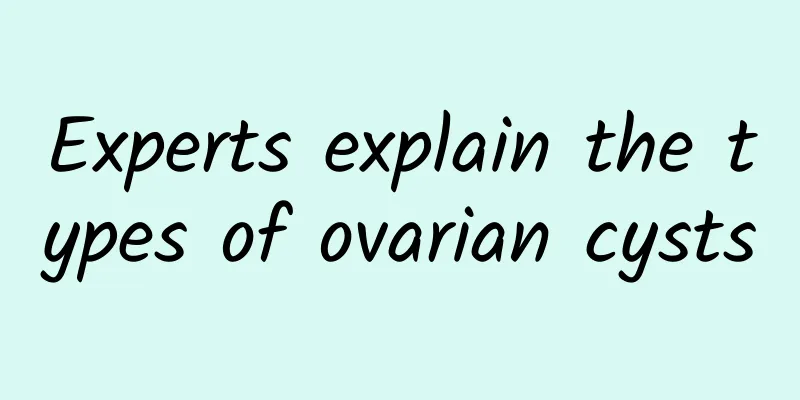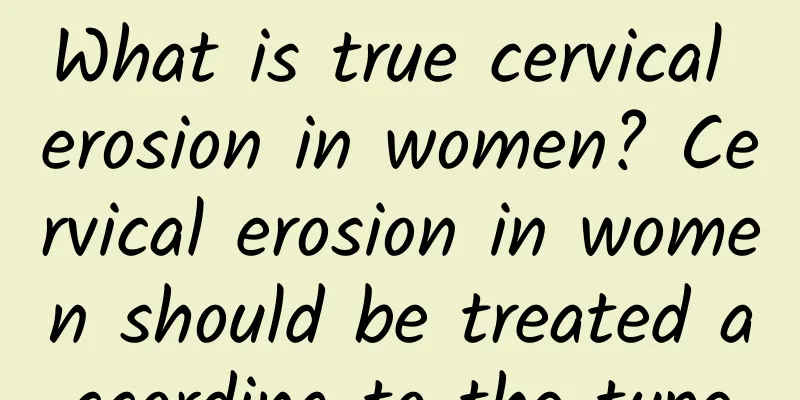Experts explain the types of ovarian cysts

|
Women's ovaries are very important and are indispensable for having children. However, the ovaries are also the most vulnerable to damage. Ovarian cysts are a relatively common disease. After experts' diagnosis of ovarian cysts, they found that it is not a single type, that is, there are many different types of ovarian cysts. So, what are its specific types? According to the experience of many experts in diagnosing ovarian cysts, we can divide them into the following categories: 1. Functional ovarian cyst: This is the most common cyst. It occurs in women of childbearing age during the ovulation cycle. An abnormal amount of fluid accumulates in the follicle or corpus luteum, forming a follicular cyst or corpus luteum cyst. This functional cyst can sometimes be very large, but regardless of whether medication is used or not, it usually disappears on its own within three months. 2. Hemorrhagic ovarian cysts: Sometimes follicular cysts and corpus luteum cysts grow too fast, causing the ovarian tissue to tear and bleed. The blood accumulates in the ovary because there is no outlet, which is called a hemorrhagic cyst. This type of cyst usually disappears on its own, but it takes a long time. If the physical discomfort is more obvious, you can take medicine to alleviate the symptoms. Only in a few cases, when the patient presents more serious symptoms, surgery is required. 3. Serous epithelial cysts and mucinous epithelial cysts: After three months of observation, the cysts that still exist may be epithelial ovarian cysts rather than functional cysts. This is because the serous cells and mucinous cells with secretory functions are buried in the ovaries after ovulation, and they continuously secrete fluid to form cysts. This type of cyst will not disappear and needs to be removed surgically. 4. Chocolate cyst: refers to endometriosis growing in the ovaries, forming a large amount of sticky coffee-colored liquid like chocolate in the ovaries. Because endometriosis will grow larger over time, it will gradually erode normal tissues and cause irreversible damage to ovarian tissues. After evaluating its severity, surgery may be required. 5. Teratoma: This is a very special cyst. It may be a problem with cell differentiation during the embryonic period, and it takes a long time to show up. It will form a collection of hair, teeth, and some oils in the ovary. Since the teratoma itself will not disappear on its own and may continue to grow, and there is a 15% chance of causing ovarian torsion, it is best to remove it early. Generally speaking, the rate of malignancy is less than one in a thousand. 6. Ovarian cancer: The chance of developing ovarian cancer is quite low, but because it is located in the pelvic cavity, it is not easy to detect early. 7. Endometrioid tumors have a smooth surface and are often unilocular. Their inner wall is composed of a layer of tall columnar epithelium that is very similar to the endometrium. The surrounding connective tissue lacks endometrial stroma, and there is no bleeding inside or outside the cyst. From the above content, I believe you can see that the family of ovarian cysts is still very large, which invisibly increases the harm to women's health. Therefore, I hope that the majority of female compatriots will pay more attention to knowledge related to the ovaries and take preventive measures to avoid being harmed by the disease. Special topic on ovarian cysts: http://www..com.cn/fuke/ncnn/ |
<<: What are the causes of multiple uterine fibroids?
>>: What should I do if I have multiple uterine fibroids?
Recommend
How to distinguish the common types of vaginitis?
Vaginitis is a very familiar gynecological diseas...
What are the symptoms of early pregnancy? What should you pay attention to in the early stages of pregnancy?
In daily life, many women have unexpected pregnan...
The dangers of surgery for cervical precancerous lesions
When it comes to cervical precancerous diseases, ...
168 Is fasting super effective for weight loss? Eating the wrong food for a long time may cause loss of muscle! 4 health risks you must know
There are hundreds of ways to lose weight, among ...
What is vaginitis?
What is vaginitis? This is a concern for everyone...
How much do you know about the symptoms of female adnexitis?
What are the symptoms of adnexitis? Understanding...
Which is more harmful, induced abortion or artificial abortion?
Which is more harmful, induced abortion or artifi...
What are the diagnostic methods for vaginitis?
What are the diagnostic methods for vaginitis? Wh...
Is it safe to have sex with a condom 18 days after an abortion?
Abortion refers to artificial abortion. It is gen...
Tocopherol helps you lose weight! Musk grape seed oil has a set
If you want to lose weight, the thing you fear mo...
Is it good to eat tomatoes during menstruation? Pay attention to the 7 taboos during menstruation
During menstruation, women should pay attention t...
Is it good to do yoga for dysmenorrhea?
Women all suffer from dysmenorrhea to varying deg...
What is the difference between uterine fibroids and cervical fibroids? Are uterine fibroids and cervical fibroids related?
Uterine fibroids and cervical fibroids are two co...
What to check after abortion
Although artificial abortion technology is very a...
What are the symptoms of endometriosis
Endometriosis is a common gynecological disease w...









